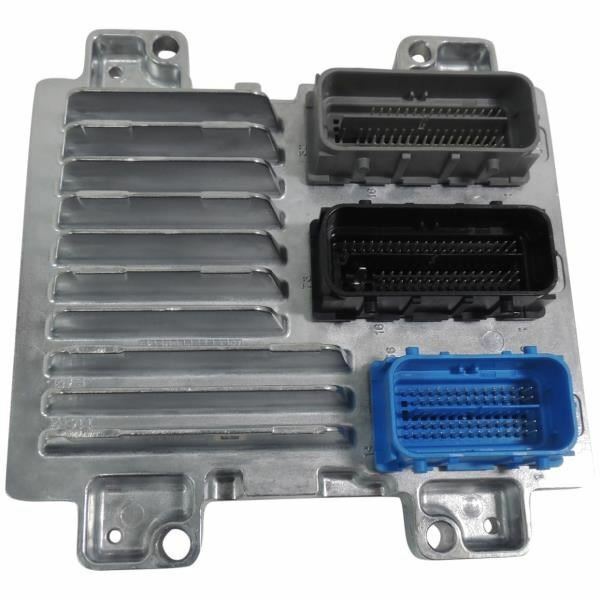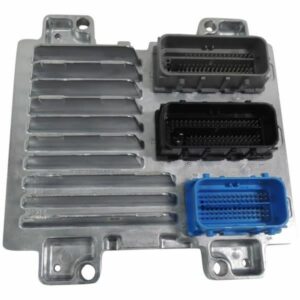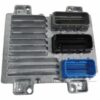Restore Peak Performance and Reliability to Your GM Vehicle
Is your truck or van plagued by a persistent Check Engine Light, experiencing frustrating no-start conditions, or suffering from poor fuel economy and rough idling? These are classic signs of a failing Engine Control Module (ECM), the central computer that governs your vehicle’s engine performance, fuel delivery, and emissions. Don’t let a faulty module keep you sidelined. This direct-replacement ECM, part number 22819494, is the definitive solution, arriving at your door fully programmed with the latest GM software updates specifically for your vehicle’s VIN.
As a technician with over two decades of experience, I’ve seen firsthand how a failing ECM can cause a cascade of confusing and costly issues. A faulty module can mimic other problems, leading to wasted time and money on unnecessary parts. By replacing your old unit with this professionally programmed module, you’re not just swapping a part; you’re restoring the very brain of your engine’s operating system. We handle the complex programming, so you can enjoy a straightforward installation and get your vehicle running like new again.
Case Study: A Tricky Diagnosis
A customer brought in a 2016 Silverado 2500 work truck with an intermittent no-start condition that was costing him business. The truck would crank but wouldn’t fire, and there were no consistent trouble codes. After checking fuel pressure and spark, which were both erratic, we hooked up our advanced diagnostic scanner. We noticed the ECM would periodically lose communication with the other modules on the CAN bus. After ruling out wiring issues, we identified an internal fault in the ECM. We installed one of these VIN-programmed modules, and the truck fired up on the first try and has been reliable ever since. It’s a perfect example of how a failing ECM can present baffling symptoms that a direct, correctly programmed replacement can solve instantly.
Is Your GM Vehicle Showing These ECM Failure Signs?
- ✔ Persistent Check Engine Light (CEL) that won’t clear.
- ✔ Engine cranks but refuses to start.
- ✔ Stalling, stumbling, or rough idling for no apparent reason.
- ✔ Noticeable decrease in fuel economy.
- ✔ Failed emissions testing.
- ✔ Harsh or erratic automatic transmission shifting.
- ✔ Diagnostic Trouble Codes (DTCs) pointing to internal module failure, such as P0601 (Internal Control Module Memory Check Sum Error) or P0606 (ECM/PCM Processor Fault).
- ✔ Loss of communication with the ECM when using a scan tool.
A Straightforward Guide to Installation
- ✔ Safety First: Disconnect the negative terminal from your vehicle’s battery and secure it away from the post to prevent accidental reconnection.
- ✔ Locate the ECM: On most compatible trucks and vans like the Suburban or Silverado, the ECM is located in the engine compartment, typically on the driver’s side near the firewall or inner fender.
- ✔ Disconnect Connectors: Carefully release the locking tabs and unplug the main electrical harness connectors from the old ECM. Avoid forcing them.
- ✔ Remove the Old Module: Unbolt the mounting hardware that secures the ECM to its bracket or the vehicle body. Set the old module aside.
- ✔ Install the New Module: Mount your new, pre-programmed ECM in the same location and secure it with the original hardware.
- ✔ Reconnect and Secure: Plug the electrical connectors firmly into the new module until they click into place. Reconnect the negative battery terminal.
- ✔ Final Steps: Some vehicles may require a security relearn procedure, which can often be completed by cycling the key. Please consult your vehicle’s service manual or contact us for specific instructions. Start the engine and verify that the Check Engine Light is off and the vehicle runs smoothly.
Verified Vehicle Compatibility
This module is a direct replacement for part number 22819494 and interchanges with 12668866, 12668994, 12643636, 12663405, 12670335, and 12692200. It is guaranteed to fit a wide range of GM vehicles, including but not limited to:
- ✔ 2016 Chevrolet Suburban 3500
- ✔ 2012-2016 Chevrolet Silverado 2500/3500 & GMC Sierra 2500/3500 (6.0L)
- ✔ 2016 Chevrolet Express & GMC Savana 2500/3500 Vans (4.8L, 6.0L)
- ✔ 2012-2016 Chevrolet Sonic (1.4L)
- ✔ 2012-2016 Chevrolet Cruze (Gasoline models)
- ✔ 2013-2016 Buick Encore (1.4L)
- ✔ 2013-2016 Chevrolet Trax
- ✔ 2011-2015 Chevrolet Volt
- ✔ 2014-2016 Cadillac ELR
- ✔ 2014-2015 Chevrolet Spark (Gasoline models)
IMPORTANT: To ensure perfect compatibility, please provide your 17-digit VIN when placing your order. This allows us to program the module specifically for your vehicle’s factory configuration.
Do I need to do any programming myself?
Do I need to do any programming myself?
No. We handle all the programming before we ship the module. It will arrive loaded with the latest GM software and coded to your specific VIN, making it ready for installation right out of the box.
Why do you need my VIN?
Your Vehicle Identification Number (VIN) contains critical information about your vehicle’s specific options, engine, transmission, and emissions systems. Programming the ECM with your VIN ensures it communicates perfectly with all other computers in your vehicle, restoring original factory performance and functionality.
Is this a simple DIY job?
For most models, the physical replacement is straightforward and requires only basic hand tools. Because the programming is already done, you eliminate the most complex step. It’s a job many of our DIY customers successfully complete in their own driveway.
Will this fix my specific problem?
This module is the solution for a failed ECM. If your vehicle has been properly diagnosed with a faulty engine computer (e.g., with codes like P0601 or P0606), then this part will resolve those issues. It will not fix problems related to other faulty sensors or mechanical components.
What is the difference between an ECM and a PCM?
The terms are often used interchangeably. ECM stands for Engine Control Module, while PCM stands for Powertrain Control Module. In most modern vehicles, a single PCM controls both the engine and the transmission. This part serves that function for the compatible vehicles listed.



